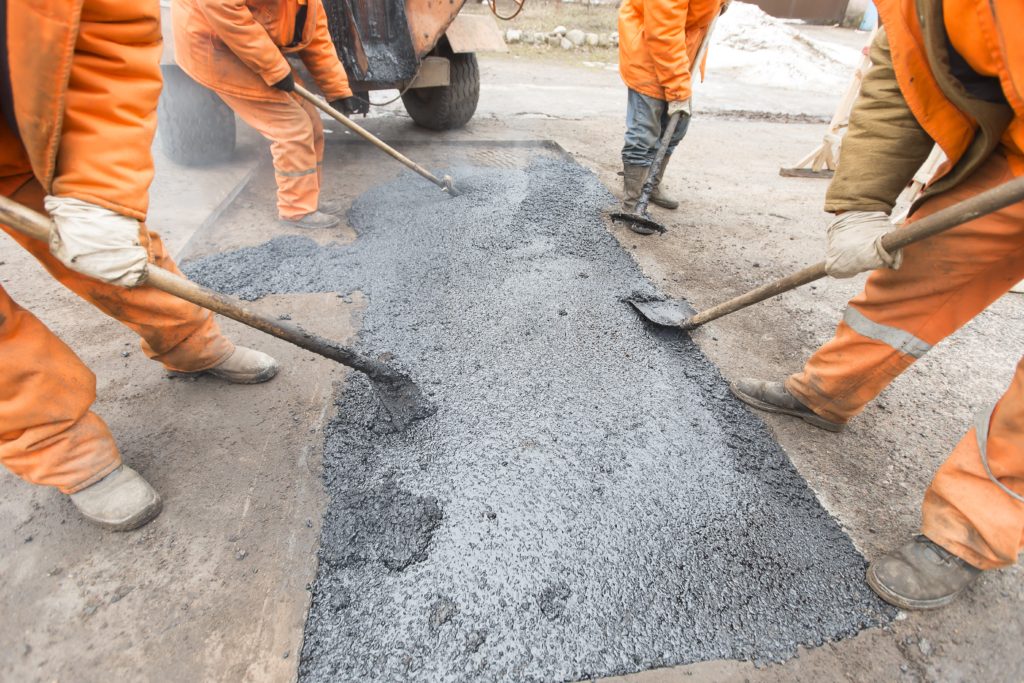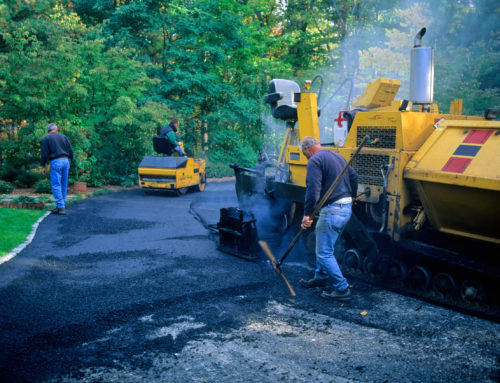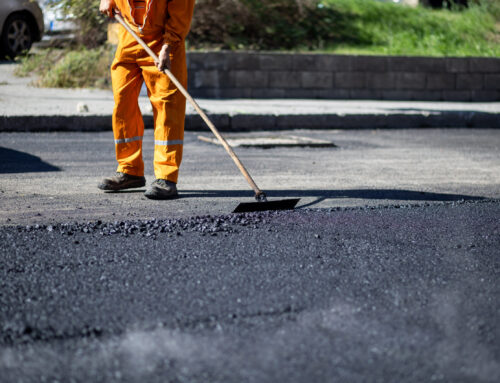You’re cruising west down Speedway Blvd, heading home from the University of Arizona Museum of Art when all at once you feel that awful, familiar bump. Pothole! Your tire just hit it going, well maybe a bit too fast, and now you’re worried your tire is about to blow. Luckily for you, you’re able to get home, but not before you cruise over a few more of those dang things pulling into your home. How do these things get everywhere and why isn’t someone fixing them? That’s what this blog is all about – potholes, how they form and how to fix them.
How Potholes Form
A pothole is a spot or area of degradation in an asphalt surface. You know, those chunks of the road where your car suddenly dips and lets loose with a loud thud. The asphalt has lost its structure and as a result, the ground beneath the asphalt is exposed. Here’s how the asphalt degrades.
First, water seeps through cracks in the pavement. These cracks can be caused by temperature fluctuations, but most often due to the load placed on the surface by traffic. When the water is subjected to freezing temperatures it will, well, freeze. This expansion causes more degradation to the asphalt and roadbed. The water also can erode the structure as it runs off and drains.
Once the water has degraded the road and soil (whether from freezing temps or otherwise) there is now room for further damage. As traffic continues to drive over the asphalt, the weight and loads placed on that piece of the asphalt, will cause it to crumble and get packed in. This weak spot will, inevitably, collapse into the archetypal pothole. Further wear and tear will cause the pothole to expand, getting wider and deeper without repair.
That is one of the few main causes for potholes. The others are insufficient pavement thickness, failures at the utility placements.
That’s where fixing it comes in!
 How to Fix a Pothole
How to Fix a Pothole
Just like the causes of a pothole, there are a few different means to fix them! Aside from prevention there are about four general ways to go about repairing the pothole.
Spray-injection Repair
The spray-injection repair method involves specialized equipment. Using the spray-injection device, all water and debris is blown out of the pothole. Then a layer of tack coat binder is applied to the bottom and sides of the hole. Next asphalt and aggregate are blown into the hole and then another layer of aggregate covers the patched area. For the spray-injection method, no compacting is needed after its been placed.
Semi-Permanent Repair
The semi-permanent method is one of the best there is. You’ll remove all the debris and water from the pothole, just like the spray-injection method. Then the pothole area will need to be prepared for patching. That means clean cuts along each side to ensure that each is a sound piece of pavement. If there are any weaknesses here they will just create another point for a pothole to develop. Then, using your cold or hot patch mix, fill up the hole and compact.
So that’s how you fix a pothole, well aside from calling the city and getting them to take care of it! There are a few other methods out there of course, and just talk to any uncle and they’ll have their technique but past these ones we don’t recommend them.
The best defense is a good offense however and taking whatever steps necessary to prevent their generation is worth it when it comes down to the cost. Practice preventative maintenance and see your asphalt surfaces lasting a good long time, and if you’re already in need of a repair, give us a call and we’ll get you sorted.




